Gallery Network
7 Questions for OOA Gallery on the Vitality of Contemporary African Figurative Art
The gallery is presenting a group exhibition highlighting contemporary pioneers of the genre.
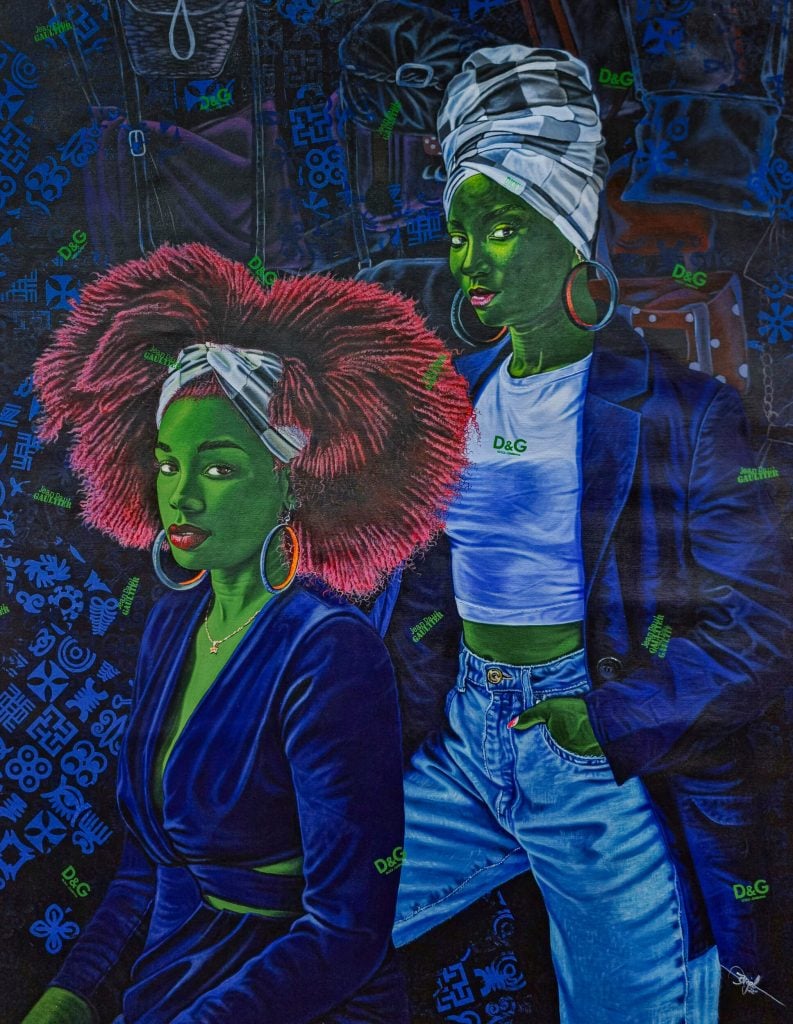
The gallery is presenting a group exhibition highlighting contemporary pioneers of the genre.

Artnet Gallery Network

Founded in 2011, OOA Gallery (Out of Africa Gallery) maintains a mission of fostering and promoting contemporary African art, working closely with a diverse roster of artists and developing relationships with collector, patrons, and institutions around the world. Based in Sitges, Spain, the gallery platforms both emerging and established artists alike, highlighting both growing trends as well as historically rooted explorations of art movements.
On view through January 7, 2024, OOA Gallery is presenting the group exhibition “African Figurative Art: More Alive Than Ever!” Featuring the work of six contemporary African artists, the show aims to contribute to the increasing and needed visibility and representation of Black artists and works within the current art historical context.
Recently, we reached out to the OOA Gallery team to learn more about the importance of this exhibition as well as African figurative art today.
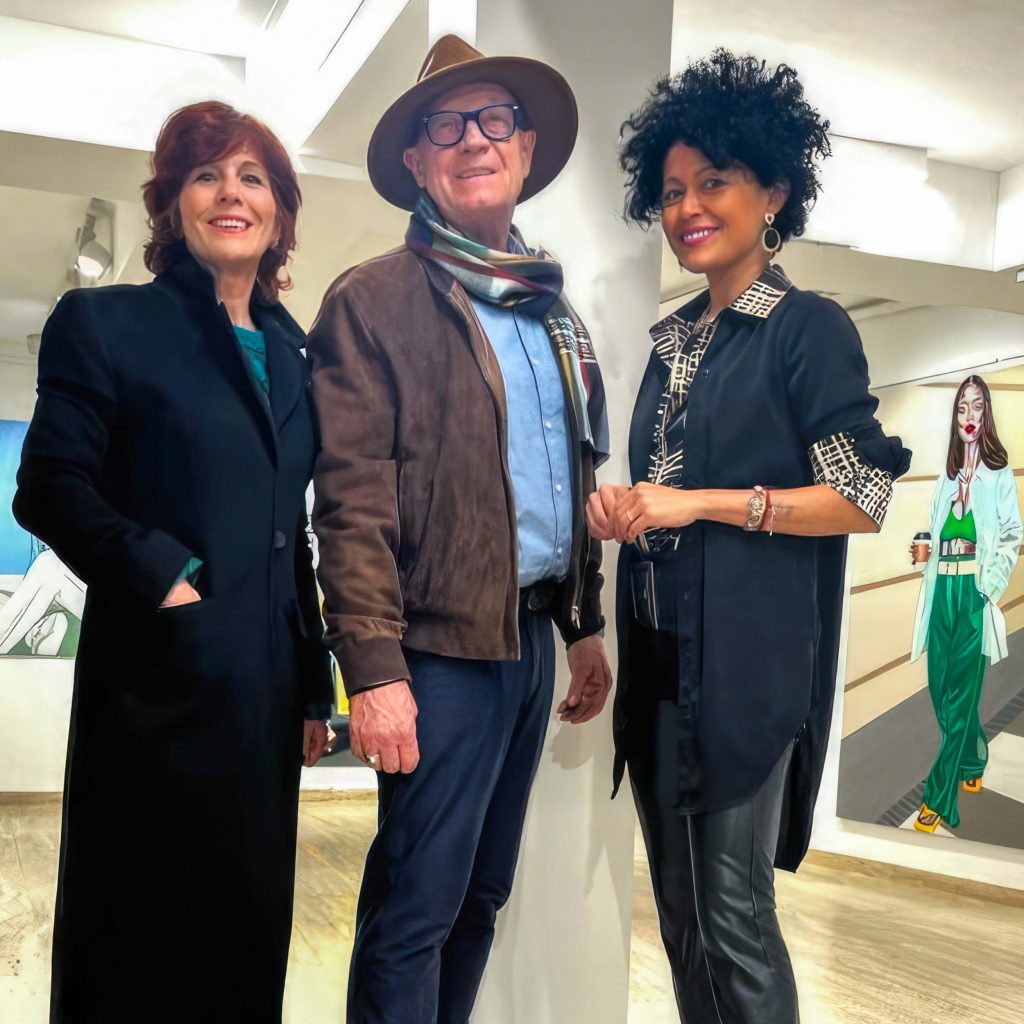
OOA Gallery Team, left to right, Sorella Acosta, Jacques Collaer, and Carolina Arvelo. Courtesy of OOA Gallery, Sitges, Spain.
Can you talk a bit about the current exhibition and the themes of the show? What inspired putting it on?
The surge in visibility for Black figurative painters has been a catalyst for the current exhibition at OOA Gallery. Inspired by the growing recognition of Black artists in reshaping the discourse on painting and identity, “African Figurative Art: More Alive than Ever!” aims to amplify their voices and provide a platform for artistic expression. The show features six African artists—Oluwole Omofemi, Ebenezer Akinola, Oliver Okolo, Opeyemi Matthew Olukotun, Daniel Onguene, and Boris Anje (Anjel). These artists employ figurative art to offer tender depictions and narratives, reclaiming spaces from which they were once excluded.
What went into considering and choosing the six artists in the show?
Selecting the artists for this exhibition involved a meticulous process that aimed to capture the diversity and depth of contemporary African figurative art. We considered factors such as artistic innovation, thematic relevance, and a commitment to bridging cultural traditions with modern expressions. One standout artist in our selection is Boris Anje (Anjel), whose artworks epitomize the intricate cultural dialogue between tradition and modernity. Take, for example, his piece Erin Niguel Earrings (2022), where vivid greens delicately illuminate Black femininity. The selection of Anjel and other artists was driven by their ability to contribute to a rich narrative that explores the intersection of heritage and the present. Each artist brings a unique perspective, creating a collective tapestry that reflects the dynamic nature of contemporary African art.
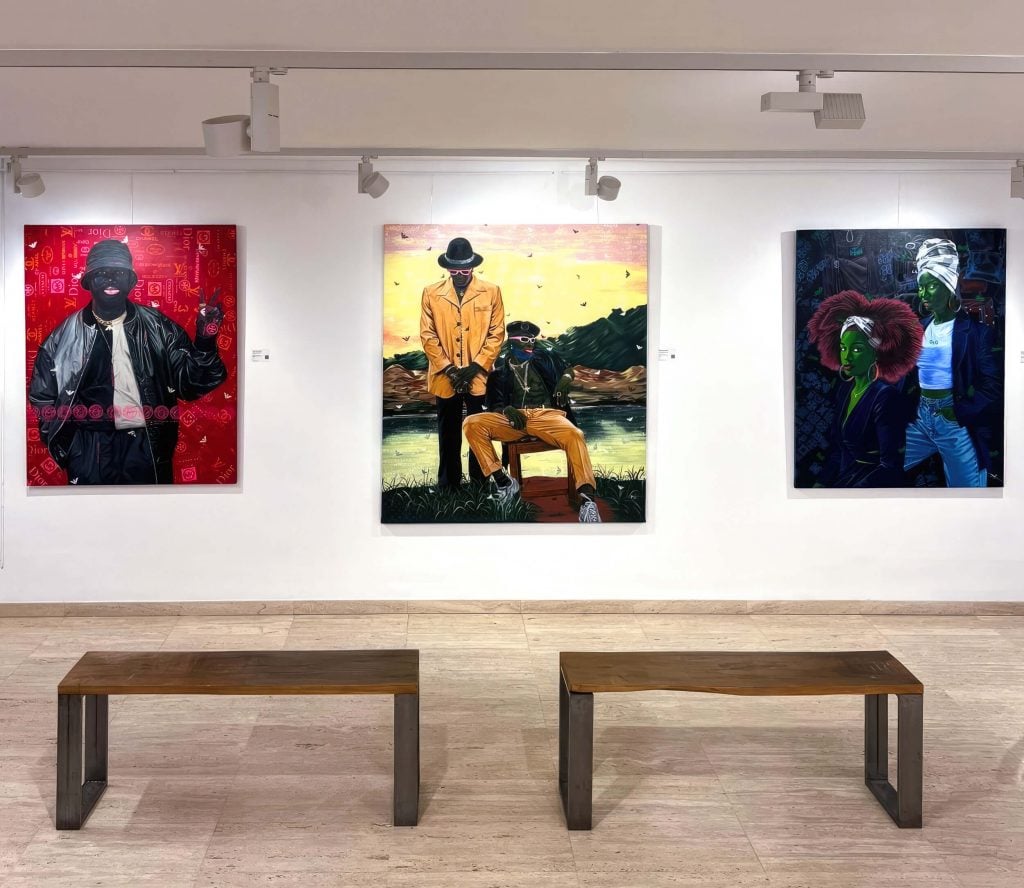
Installation view of “African Figurative Art: More Alive Than Ever!” (2023–24). Courtesy of OOA Gallery, Sitges, Spain.
What do you feel is the importance or significance of African figurative art in the current moment of contemporary African art?
African figurative art holds pivotal importance in contemporary African art, serving as a dynamic bridge between tradition and modernity. It encapsulates diverse narratives, cultural richness, and socio-political commentary. By engaging with heritage and pushing creative boundaries, it contributes to a vibrant discourse, fostering identity expression and challenging stereotypes. In the current moment, the significance of African figurative art lies not only in its ability to connect the past with the present but also in its role as a global ambassador for diversity and artistic innovation. It fosters a dynamic discourse that pushes creative boundaries and contributes to a nuanced narrative on both the African continent and the global stage.
What about within the context of the greater art world and market?
African figurative art’s significance extends beyond the local context to the broader art world and market, where it represents a growing cultural and economic force. This is evident in the increasing demand for diverse voices within the global art scene. For instance, recent statistics show a notable rise in the value of African figurative art in international auctions, emphasizing its growing prominence. Additionally, the infusion of African figurative art challenges Eurocentric perspectives, as acknowledged by renowned art critics, who laud its contribution to diversifying narratives and enriching the collective artistic tapestry. As the international art market continues to embrace diverse expressions, African figurative art not only contributes to a more inclusive art discourse but also attracts attention in the global market, fostering cross-cultural appreciation and investment. Its presence underscores the transformative power of embracing varied artistic expressions within the contemporary art landscape.
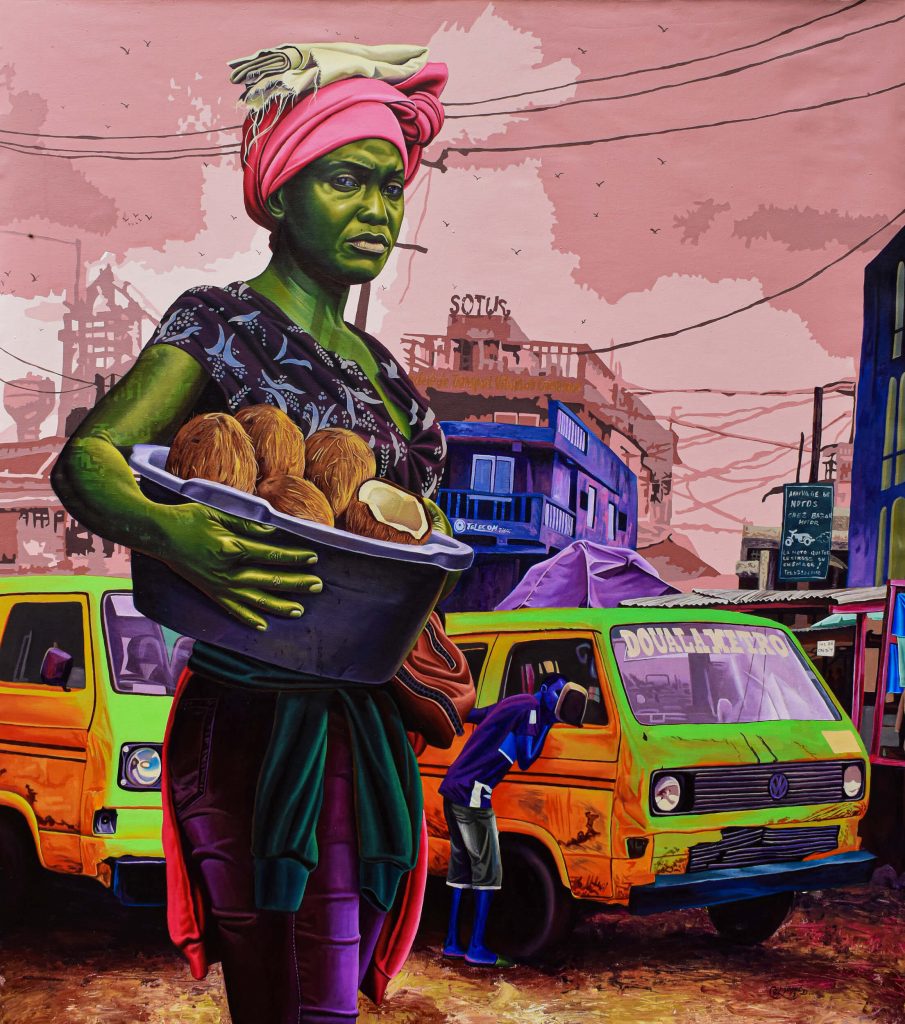
Daniel Onguene, Stephanie à la gare ancienne SOTUC (2023). Courtesy of OOA Gallery, Sitges, Spain.
What do you want visitors of the exhibition to take away with them?
I want visitors to “African Figurative Art: More Alive Than Ever!” to leave not only with a profound appreciation for the vitality and diversity of African figurative art but also with specific insights into the narratives and cultural depth embedded in each piece. By highlighting specific works within the exhibition, such as Stéphanie a l’ancienne gare SOTUC by Daniel Onguene and Contradictions by Boris Anje, I aim for visitors to connect with the artists’ perspectives on a deeper level. Additionally, to foster cross-cultural appreciation, interactive elements like detailed cultural context descriptions will be incorporated into the exhibition, inspiring curiosity, dialogue, and a recognition of the enduring significance of African figurative art within the global artistic landscape.
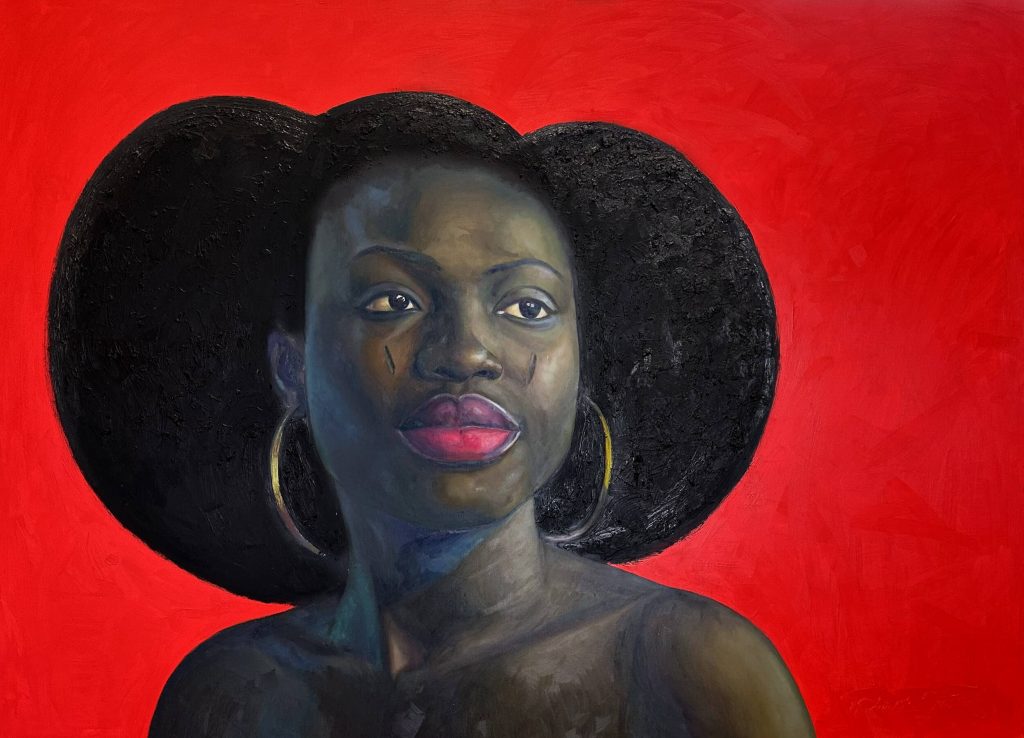
Oluwole Omofemi, Desire (2023). Courtesy of OOA Gallery, Sitges, Spain.
What do you see the role of art in society today?
Art in society today serves multifaceted roles. It acts as a mirror, reflecting societal values, such as in the “Talking Walls” series by Kenyan artist Onyis Martin. In Omofemi’s Black women faces, art fosters empathy and understanding, promoting dialogue on pressing issues. It inspires creativity and critical thinking, contributing to education and innovation. Moreover, art provides a platform for marginalized voices, such as in the artwork Everyday Heroes by Cameroonian artist Daniel Onguene, challenging norms and fostering inclusivity. In times of upheaval, it becomes a powerful tool for catharsis and social commentary, such as in Ebenezer Akinola’s artwork. As a unifying force, art has the potential to transcend cultural boundaries, connecting people through shared emotions and experiences, thereby playing a crucial role in shaping and influencing societal dynamics.
Can you tell us about any forthcoming shows or events coming up at the gallery?
In the upcoming first semester of 2024, OOA Gallery is set to deliver a robust program, starting with a dual-artist show featuring emerging Nigerian artist Okoye Emeka and American Kenyan-based artist Olivia Mae Pendergast (January 20–February 25). This will be followed by our participation at Art Madrid (March 6–10) with established Nigerian artist Ajarb Bernard Ategwa, Kenyan Paris-based artist Evans Mbugua, and Beninese sculptor Remy Samuz. Subsequent highlights will include a solo show with renowned Ivorian artist Armand Boua (March 23–April 21) and Ajarb’s solo exhibition (April 27–May 26). June will see OOA Gallery host the first LGTBIQ+ Group show in Sitges, Barcelona, promoting openness, coexistence, and the celebration of diversity, welcoming everyone irrespective of race, religion, or sexual orientation.
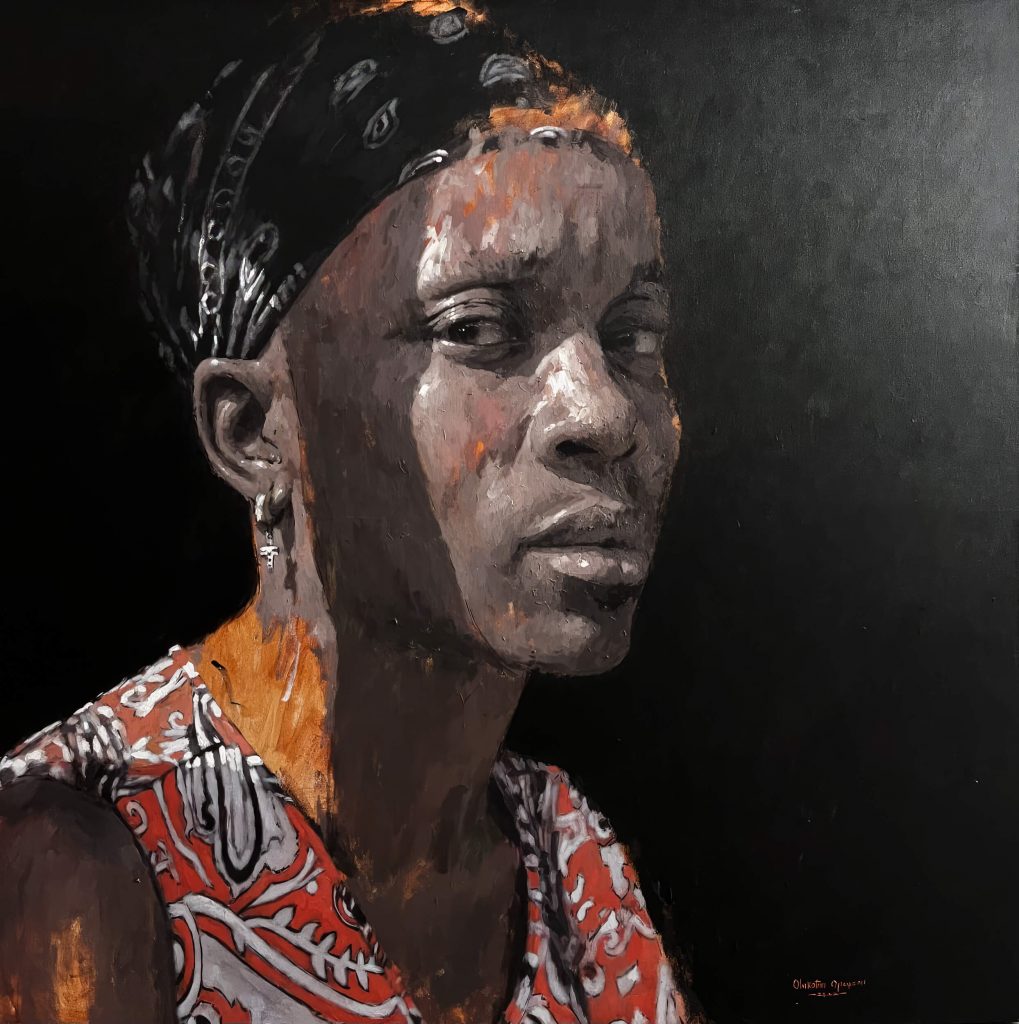
Opeyemi Matthew Olukotun, In between II (2022). Courtesy of OOA Gallery, Sitges, Spain.
“African Figurative Art: More Alive Than Ever!” is on view through January 7, 2023.